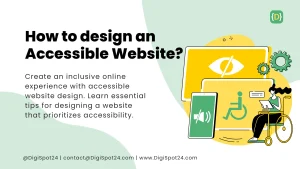
Few words are as effective at driving sales than “free.” Just these four letters have the power to create an emotional response that often exceeds standard cost/benefit analyses.
Researchers found that offering candy at one cent per piece attracted only 58 students; when provided free-of-charge, nearly twice as many visited.
Increased Sales
Offering your product at no cost can be a powerful sales tool. Consumers quickly recognize the value of free samples or trial periods, and may even spend additional money to take full advantage of them.
Freebies may have a more profound effect than discounts in changing perception of value, so using them to address fundamental value problems (like reducing price) might only work as a temporary fix.
Freebies also help brands take advantage of the endowment effectHuo Qian, where consumers feel ownership over an item even though they do not actually possess it financially. This irrationality explains why so many will fight over cereal boxes or stand in line for hours at Costco to receive samples of Nutella; our brains just work this way!
Increased Customer Loyalty
Digital freebies allow consumers to experience products prior to committing to purchase them and serve as an anchor point in cost/benefit analyses to help determine whether to take desired actions or not.
Physical freebies make it easier for consumers to take an action such as signing up for your newsletter or sharing it with others – known as the’reciprocity effect’ and is one of the primary reasons businesses offer free products to potential customers.
People tend to assign greater societal value to something free. According to Dan Ariely’s book Predictably Irrational, participants in an experiment where Lindt truffles cost 15 cents each or Hershey Kisses cost just one cent were offered as choices; more participants chose Lindt truffles despite them being more costly; similarly this principle can apply when considering giveaway merchandise and merchandise with brand value.
Increased Customer Satisfaction
Offering free samples can bring an instantaneous uptick in sales for any business. Offering risk-free trials may entice consumers to purchase the full-sized version and convert hesitant buyers into regular purchasers, making this strategy particularly helpful when competing in highly competitive markets.
Business leaders might also consider using the freemium model, in which core features of its product are provided for free while premium ones require payment. This strategy may encourage repeat purchases by building loyalty. For example, attending free monthly tele-classes might lead to enrolling in paid seminars later.
Addition of a time limit can create the perception of scarcity, heightening perceived product value. Girlfriend Collective understood this principle when giving away leggings to its fans who shared its offer on social media.
Increased Brand Awareness
Offering free products is one way for a business to spread awareness about its brand, particularly if they’re of good quality and made to last. Conversely, giving away low-grade goods that won’t provide value or stand the test of time quickly loses value and becomes devalued in customer’s eyes.
Dan Ariely, a behavioral economist and author of Predictably Irrational, describes an interesting choice experiment in which participants were offered one cent for either a Lindt chocolate truffle or lower-quality Hershey’s Kiss candy bar – with dramatic results: those who normally conduct thorough cost/benefit analyses selected the Hershey’s Kiss instead.
Consumers recognize perceived value is an integral component of consumer decision-making, which makes ‘buy one, get one free’ offers an effective strategy for driving consumer decision making and increasing brand recognition while driving sales. By giving out free samples at trade shows or community events, for example, companies can generate buzz around new product releases that draw in potential buyers and increase brand recognition simultaneously.






